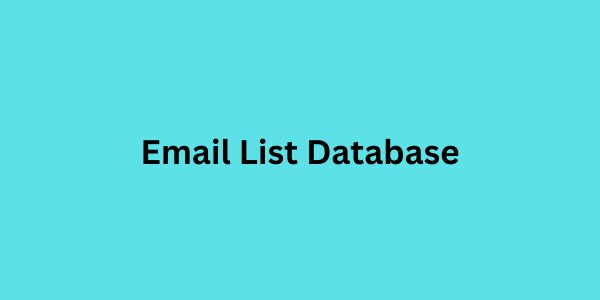How do you get on top of your Mastering Your Inbox:
Overwhelmed by the constant deluge of messages landing in your inbox? Like you are always playing catch-up? Then it is time to take control of your inbox and restore order to your life. Here is a 500-word guide to taking control of your email inbox.
1. Unsubscribe Strategically:
Weed out useless subscriptions: unsubscribe to newsletters, promotional e-mails, or irrelevant updates in your inbox. To save time, use tools like Unsubscriber or Mailbrew to automate this. Be discriminative in applying to services of different kinds, asking yourself if you really need their e-mails. 2. Clearly Create Folders and Labels:
Organization of the inbox itself:
set up folders regarding work, personal, social, and bills.
Labels: Apply labels to further Thailand Email Database sub-categorize your emails within the folders, and these will also be searchable.
Maintenance: Periodically go through your folder and label setup to make sure it works for you.
3. Allocate Specific Time for Emails:
Batch Processing:
Allocate specific time for viewing and responding to email.
Minimize Distractions: Ensure you are not getting any distractions during that time.
Limit Checking: Limit checking email only a few times outside this scheduled time.
4. Decide on Priority and then Delegate:
Use the Eisenhower Matrix: Classify emails into urgent/important, important/not urgent, urgent/not important, and not urgent/not important. Delegate tasks: Wherever possible, assign tasks or requests received by email to others for execution. Focus on high-value work: Preferentially address emails that have a direct link with your objectives and responsibilities. 5. Pen Concise and Clear Emails:
Get to the point:
Clearly describe in both the subject line and opening paragraph what the purpose of your email is.
Bullet items: Having information organized in a systematic manner by means of bullet items allows for easy reading.
Proofread carefully: Be cautious about errors, which may be time-wasting misunderstandings.
6. Email Filters and Rules:
Auto-sorting: Make good use of filters to automatically sort email into various categories depending on who sent it and other criteria.
Rules: Apply rules that instruct email against specified actions to move them into a particular folder.
Personalize your inbox:
Work with personal options in your email settings to accord more with your needs and workflow better.
7. Escape Email Overload:
Limit attachment: Avoid attaching big attachments that may block inboxes.
Give access by cloud storage: Cloud storage services allow to provide access to the files, but attaching them is not recommended.
CC and BCC judiciously:
CC and BCC judiciously lest unrequired messages jam electronic inboxes
8. Effective Communication:
Respond immediately: One should try to respond to messages received, especially urgent ones.
Give clear instructions: Never use vague or ambiguous words and expressions to avoid confusions.
Follow up if necessary on the emails to make sure those have been both received and understood.
By following these approaches, you will be able to effectively reduce email overwhelm and make your inbox manageable. Consistent practice and experimentation are the keys to finding what approach to email management works best for you.



